Types Of Aquarium Snails To Add To Your Fish Tank Or Pond
If you want to add some fun, colorful characters to your community tank and don’t know where to start, here we will look at beginner-friendly snails that won’t cause overpopulation in your tank.
Firstly, I have to mention that most snails love sandy substrate, so don’t get snails if you have a bare-bottom tank. Some snails burrow, and others lay their eggs in the substrate. These snails are safe to add to planted freshwater aquariums with non-aggressive fish and shrimp.
Mystery Snails
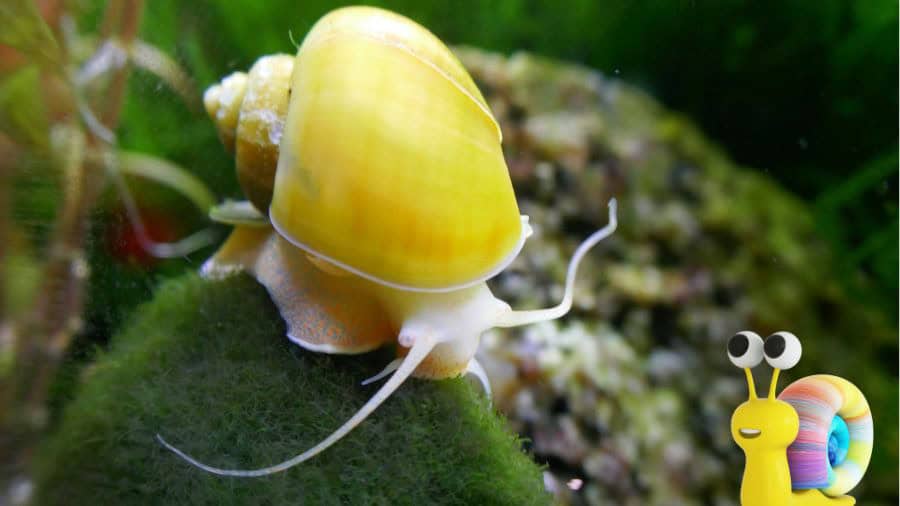
Mystery snails have beautiful, vibrant colors, adding an exciting color pop to any tank. You would never have a problem with these snails’ overpopulation, as you can control the reproduction, and you would need a male and a female present to fertilize eggs.
| Colors/Varieties | Blue, Yellow/Gold, Purple, Jade Green, Magenta, Ivory, Chestnut, Black |
| Size (Max) | Largest Freshwater Snail At 2+ Inches / 5+ CM (Diameter) |
| Lifespan | One Year |
| Sex (Male/Female) | Male – Single Visible Hole Inside The Shell (Over Left Shoulder) Female – Two Visible Holes Inside The Shell (Left And Right Shoulder) |
| Temperature | 68 – 82 Degrees Fahrenheit / 20 – 28 Degrees Celcius |
Nerite Snails
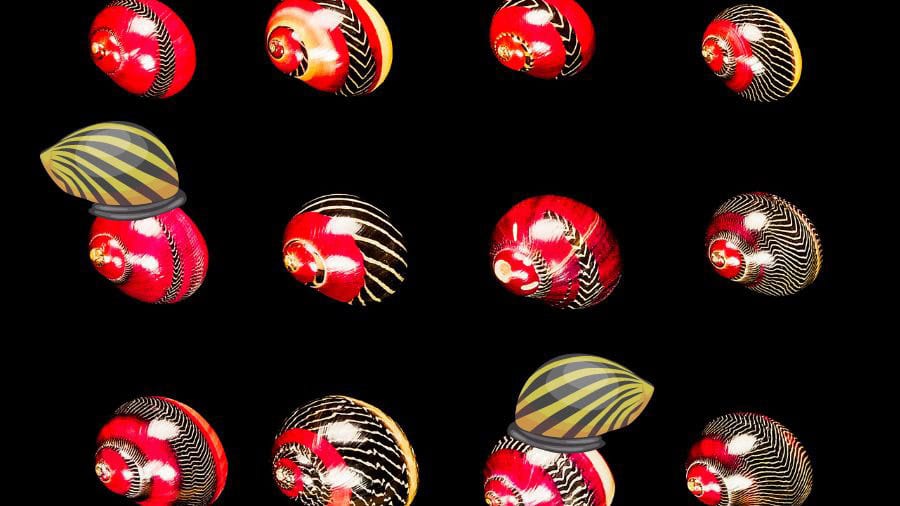
Nerite snails have beautiful patterns and are known as the best tank cleaners. If you want to breed with these snails, you would need a saltwater tank and six or more in your tank to ensure you have a male and a female, as they are difficult to sex. Nerite snails will not reproduce in freshwater tanks or ponds.
| Colors/Varieties | Zebra, Horned, Tiger, Red Racer, Olive, Black Racer |
| Size (Max) | 1/2 – 1 Inch / 2.5 CM (Diameter) |
| Lifespan | Three Years |
| Sex (Male/Female) | Male – Skin Fold Under Right Eye Female – No Skin Fold (Visible When On Glass) |
| Temperature | 71 – 79 Degrees Fahrenheit / 22 – 26 Degrees Celcius |
Ramshorn Snails
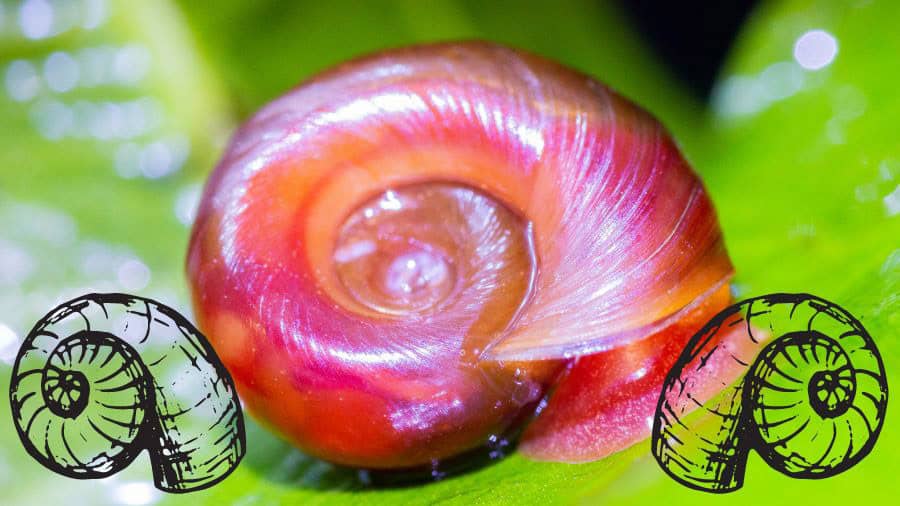
Ramshorn snails look like the name suggests, like little horns with a flatter-than-average snail-like body. Ramshorn snails are known to reproduce quickly, so they can be used as live food for your snail-eating fish.
| Colors/Varieties | Red, Brown, Blue, Pink, Black, Leopard (Spots) |
| Size (Max) | 1 Inch / 2.5 CM (Diameter) |
| Lifespan | One Year |
| Sex (Male/Female) | Male – Rounded Shell Opening And Thicker Shell Female – Oval-Shaped Shell Opening And Thinner Shell |
| Temperature | 65 – 80 Degrees Fahrenheit / 18 – 28 Degrees Celcius |
Apple Snails
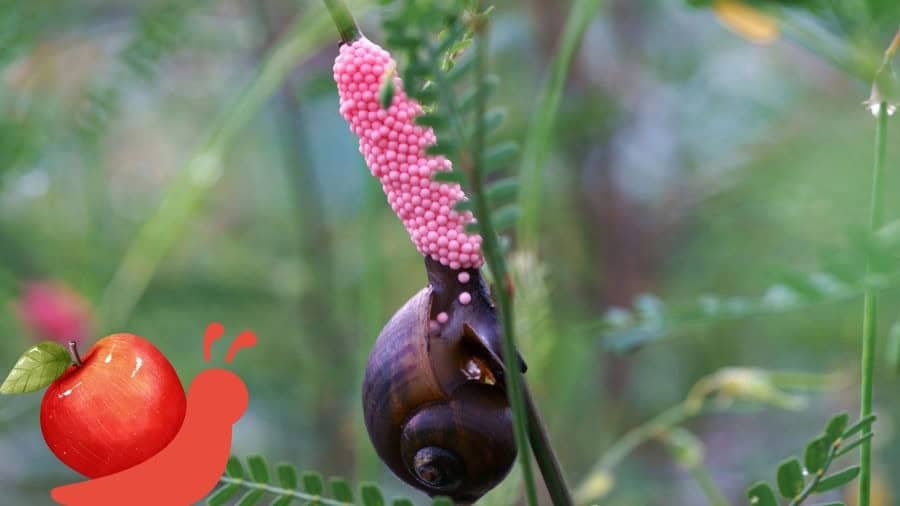
These snails are primarily nocturnal, and water temperature significantly affects their lifespan. Apple snails kept at lower water temperatures will have a lifespan of roughly three years, while those kept in warmer water could have a lifespan of five years or more.
| Colors/Varieties | Golden Yellow, Dark Brown With Black Banding |
| Size (Max) | Among The Largest Freshwater Snails At 5,9 Inches / 15 CM |
| Lifespan | Three To Five Years |
| Sex (Male/Female) | Male – Rounder Shape Shell Opening Female – Oval Shaped Shell Opening And Larger Than Male (Adult) |
| Temperature | Male – Rounder Shape Shell Opening Female – Oval-Shaped Shell Opening And Larger Than Male (Adult) |
Assassin Snails
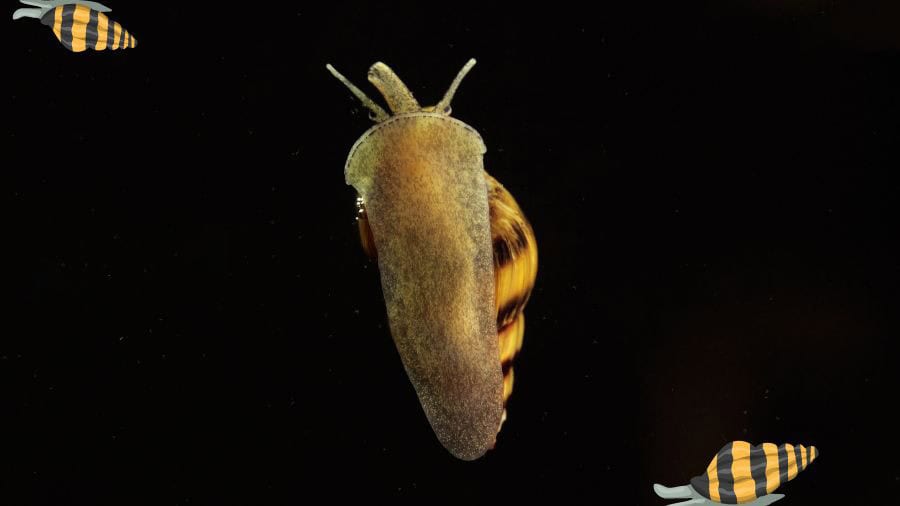
The “Bumblebee” snail has a distinct color scheme and a cone-shaped shell. These snails aren’t usually labeled as beginner snails, but many beginners use them to get rid of the unwanted snails they got for free with their aquarium plants.
Assassin snails are slow eaters, and if you do get them for the reason of “assassination” of your unwanted snails, you might have to get a few of them to sort the issue out quickly.
It is essential to know that these snails should not be kept in breeder tanks as they will eat your fish fry. Also, it is very important not to pair these snails with other types of snails as they would most likely hurt or kill them (rather safe than sorry). If you ever want to breed with this snail, you will need a bunch of them to ensure you have a male and female in the bunch.
| Colors/Varieties | Brown And Yellow Stripes |
| Size (Max) | 3 Inches / 7.5 CM (Length) |
| Lifespan | Two Years |
| Sex (Male/Female) | Look The Same And Difficult To Identify |
| Temperature | 64 – 77 Degrees Fahrenheit / 18 – 25 Degrees Celcius |
Malaysian Trumpet Snails
These snails have shells resembling sugar cones and bear live babies (up to 7 at a time).
| Colors/Varieties | Grey To Brown Fade With Darker Color Tips |
| Size (Max) | 1 Inch / 2.5 CM (Length) |
| Lifespan | One Year |
| Sex (Male/Female) | Difficult To Sex / Females Larger Than Males (Adult) |
| Temperature | 70 – 78 Degrees Fahrenheit / 21 – 25 Degrees Celcius |
Pond/Bladder Snails
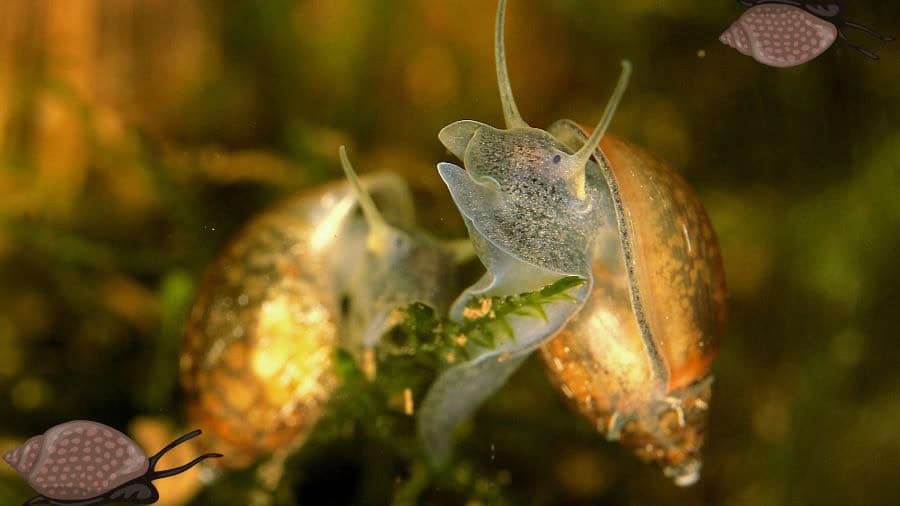
Bladder snails are quick to become pests, so please watch out. If your intention is not to breed with them to provide live food for your snail-eating fish, it might be best to avoid this snail. A bladder snail can fertilize its own eggs, especially if they feel threatened.
Otherwise, these are hardy little snails.
| Colors/Varieties | Shiny Spotted Shell Yellowish To Reddish Brown |
| Size (Max) | 0,6 Inches / 15 mm (Long) 0,3 Inches / 7 mm (Wide) |
| Lifespan | Two Years |
| Sex (Male/Female) | Hermaphrodite (Both Male And Female Organs) |
| Temperature | 60 – 82 Degrees Fahrenheit / 16 – 28 Degrees Celcius |
Rabbit/Pond Snails
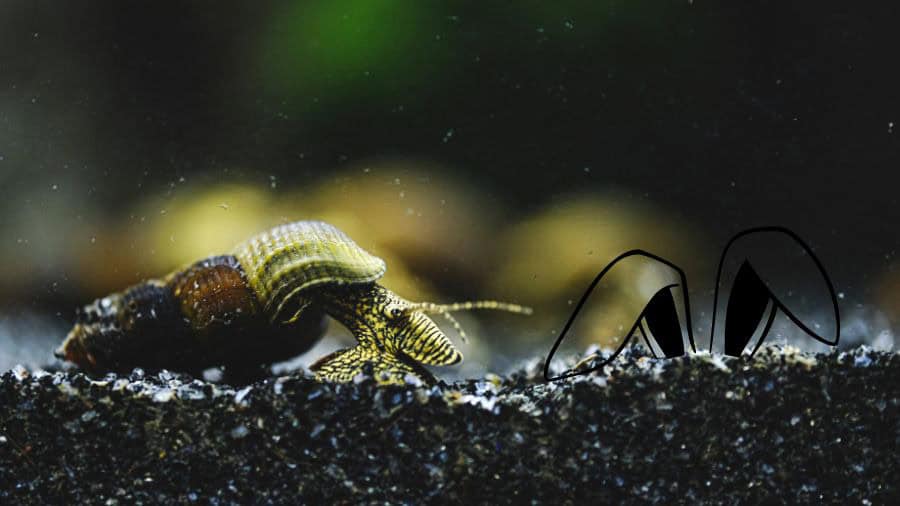
Rabbit snails come in larger and smaller sizes. Mini Rabbit snails max out at 1.5 inches / 3.8 CM in length. Their shell reminds me of a unicorn horn, and it looks like they drag their shell with them as they move along. It’s definitely fun to watch.
Rabbit snails reach their sexual maturity at around a year (2 inches / 5 CM), and when the females have babies, they have one baby at a time. These snails are live bearers and birth pencil eraser-sized white sacks where the babies quickly emerge from to start hunting for food.
Because you can’t determine the sex of these snails, when the female gives birth, it is pretty much the only way to tell if you have a male or female snail. If you would like to breed with this snail, you would need three or more to ensure you have a male and a female snail.
Please note that if this snail is hungry, it will most likely start eating your tank’s softer plants; you can combat this by incorporating harder-leaved plants, like Anubias or Amazon Swords.
| Colors/Varieties | Orange Poso, Golden, Chocolate Poso, Yellow Poso, White, Black, Including Spotted Varieties |
| Size (Max) | 3 Inches / 7.6 CM (Length) |
| Lifespan | Three Years |
| Sex (Male/Female) | Difficult To Sex / Only Determined Once Snail Delivered Baby Snail |
| Temperature | 78 – 86 Degrees Fahrenheit / 26 – 30 Degrees Celcius |
How Do I Know If My Snail Is Dead? (Alive Or Sleeping)
Most snails are nocturnal and sleep during the day, so they appear dead sometimes. I regularly take “Gary,” my Apple Snail, out of the tank to do “the sniff test” because he is always in the same position when I look at him (he loves to sleep).
If your snail is on its side, not attached to the glass, plants, or substrate, the body appears to be slipping out of the shell with its “trapdoor” open. When you touch its face or trapdoor, there is no movement. You definitely need to do the sniff test to confirm, but it will most likely have gone to snail heaven (especially if it’s stinky-rotten).
Sleeping snails will have their “trapdoor” closed as a form of protection while they sleep.
Snails thrive on fish food leftovers, algae, and dead plant matter in your aquarium. Still, for optimum health, I recommend you provide them with additional supplemented food such as blanched veggies, sinking pellets, spirulina algae wafers, and cuttlebone.
Cuttlebones should be cleaned before being placed in your tank, and a good rinse should be enough. You can keep them at the bottom of your tank with a rock or decoration. Cuttlebones are an excellent source of calcium for your snail’s shell.
Sudden water temperature changes are something to avoid when you have snails. You can avoid this by using a thermometer when doing your water changes. You can use warm water from your tap and add cold water to get your desired temperature (don’t forget to add your dechlorination drops).
Avoiding copper in your tank is very important for keeping snails. It is fatal for most invertebrates.
Copper (Freshwater Aquariums)
Copper is used as a water treatment to reduce algae growth rate and kill fish-harming external parasites such as “Ich.” Copper depresses the immune system of invertebrates and sensitive fish and can damage gills, kidneys, spleens, and other organs and system functions.
It is best to substitute any copper medication for alternatives, such as aquarium salts and Methylene blue.
